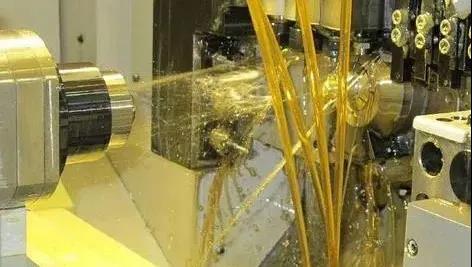In modern machining, the ratio of the processing hole depth to the diameter of the hole is usually called deep hole. During deep hole drilling, it is difficult to dissipate heat and chip removal, and the rigidity of the drill rod is slender and long, which is prone to bending and vibration. Generally, the pressure cooling system must be used to solve the cooling and chip removal. If the lubricating cooling medium is not selected properly, the following problems are prone to occur:
1. Large smoke;
2. Unsmooth chip removal;
3. Fast drill wear.
There are many types of deep hole drilling cutting oils on the market. Compared with traditional cutting oils, the formula is basically the same, but the viscosity is different. In the face of these problems, as long as we scientifically analyze the processing characteristics of each process, and clearly understand the action mechanism of the three extreme pressure antiwear agents of chlorine, phosphorus, and sulfur, we can make full use of the strengths and avoid weaknesses in various metal processing technologies and accurately use them.

Although deep hole drilling belongs to the cutting process, it is different from traditional cutting. In practice, it is found that when traditional cutting is processing, multiple tools work at the same time, the torque of each process is different, and the matching oil must be in all stages of processing. All have to play a role, so the more components of the extreme pressure antiwear agent, the better, and the higher the ratio, the better. In the early stage of deep hole drilling, the pressure reaches about 2000N when the drill is in contact with the workpiece, and the temperature rises instantaneously. It requires the selected oil to have low viscosity, good cooling, and smooth chip removal; the pressure at the end of processing is about 4000N Or so, if the extreme pressure value (PD) of the selected oil is lower than 4000N or the release rate of the extreme pressure antiwear agent in the oil is slow, then smoke and fast drill bit wear are inevitable, so choose the extreme pressure resistance As long as the abrasive is low in viscosity, can be released quickly at the stage of 2000N — 4000N, and has a high extreme pressure value. In the selection of extreme pressure antiwear agents, there are chlorine additives, phosphorus additives, traditional oily agents (T405), sulfurized fat additives, sulfurized olefins, and sulfurized fatty acid esters for selection. After the process characteristics, the selection is relatively simple. ---If the chlorine-based additive is compounded with the sulfur-based extreme pressure agent, although the PD value can be increased, it will lose its effectiveness before 2000N, so it is eliminated; --- Phosphorus additives, if compounded with sulfur extreme pressure agents, can increase the PB value, but will reduce the PD value, so it can be eliminated; ---Traditional oily agent (T405), the release of sulfur is slow, the extreme pressure effect is poor, and it is eliminated; ---Sulfurized fats, whether it is animal oil or vegetable oil, have their own high viscosity physical properties, which prevents them from having good chip removal and cooling effects, so they can be eliminated; ---The extreme pressure of sulfurized olefin additives is not high, and it does not have anti-wear properties, and it is not recommended to add; ---Sulfurized fatty acid ester, with low viscosity, good permeability, easy for cooling and chip removal, fast release of sulfur, high extreme pressure, enough to meet the technological requirements of deep hole processing. At present, there are not many non-reactive sulfurized fatty acid esters that can meet the requirements of this process in the domestic market, and YD-3015 is one of the options. A large number of four-ball machine experiments show that before 1.5S, the sulfur in YD-3015 It has already been released. When the national standard paraffin-based Base Oil is selected, only 4% to 7% need to be added, and the viscosity is adjusted to about 15. There is no need to compound other extreme pressure anti-wear additives, which is sufficient for production.






